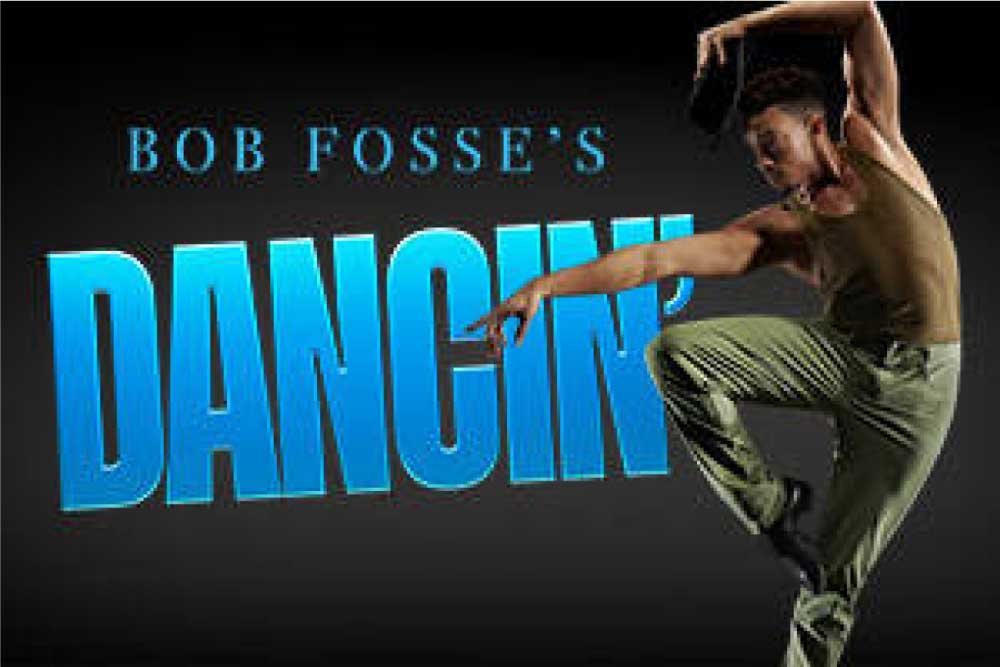Review: Broadway Revival of Dancin' Knows Fosse's Steps but Lacks His Vibe

(© Julieta Cervantes)
Bob Fosse captured the fabulous jazzy ethos of the '60s and '70s with his groundbreaking choreography; he didn't just reflect the zeitgeist, he created it. His unmistakable moves are the reason we return to films like Sweet Charity just to watch those iconic dances the "Aloof," the "Heavyweight," and the "Big Finish" from the "Rich Man's Frug."
Wayne Cilento was one of the original dancers in Fosse's 1978 "plotless musical" Dancin', which ran on Broadway for more than four years and earned Fosse his seventh Tony for Choreography. Last year Cilento as director brought his reimagined version of that show to the Old Globe in San Diego, and it has now arrived on Broadway in a production that pays homage to Fosse's choreography without really channeling him. Despite an amazing troupe of dancers, you probably won't feel the need to return.

(© Julieta Cervantes)
That's because something is missing, and it's not just Fosse. In fact, Cilento sticks maybe a little too close to Fosse's original Dancin' blueprint, beginning with a ho-hum routine featuring Neil Diamond's "Crunchy Granola Suite." This is followed by a rendition of Jerry Jeff Walker's "Mr. Bojangles," sung by Manuel Herrera (one of the show's triple threats), with Jacob Guzman and a hypnotic Yeman Brown executing a curious jail-scene pas de deux in "Recollections of an Old Dancer" (David Grill's lighting design fills this scene with silky shadows). You don't have to have seen the original version, though, to get the sense that this is a reproduction of something that used to be more exciting.
Fortunately, things start to rev up when Brown and Herrera return with Jōvan Dansberry in Part II of "Percussion," an electric, muscular number full of wide steps and shadow boxing that recalls the "Heavyweight." Following this are the terrific Ioana Alfonso, Peter John Chursin, and Dylis Croman, who keep the energy high and give us what we want with some classic limp-wrist, wide-squat moves illuminated from behind by Finn Ross's gargantuan video design.

(© Julieta Cervantes)
But the show's unevenness becomes glaringly apparent when the momentum is lost with Ron Todorowski's solo in "Ionisation." Wearing a deep red, body-hugging costume (eye-popping outfits by Reid Bartelme and Harriet Jung), Todorowski seems more comfortable executing the number's balletic moves than the Fosse footwork. The company looks more sure-footed in the "Pompeii Club" scene, which re-creates snippets from Sweet Charity, but that nostalgic trip ends in about a minute or so.
Cilento does give many of the performers their moments to shine, with several of them featured in solo performances, notably Kolton Krouse, who soars in "Spring Chicken" with the strength of a bird of prey, nails sharpened into talons. Then Act 2 gives space for dancers to show off their vocal skills. The showstopper here is Khori Michelle Petinaud, whose "Life Is Just a Bowl of Cherries" is the closest that Dancin' comes to an 11 o'clock number. Her voice rises to the rafters and gives us one of the biggest thrills in the whole two-hour, 15-minute show. Thanks to sound designer Peter Hylenski, she and the orchestra, led by Justin Hornback, come through loud and clear.

(© Julieta Cervantes)
Yet with all respect to Fosse, there are some numbers retained from the original that sound terribly awkward and might have been better left on the cutting room floor. The "America" segment, beginning with Ida Saki circling the stage to "Rally 'Round the Flag," wrinkles the forehead. It's not till we see other members of the company come out clad in black-and-white bodysuits for "Yankee Doodle Dandy" and "America Finale" — a huge black-colored American flag projected behind them — that we understand the bitter irony of the music. I'm all for making this kind of political statement, but the songs that Fosse used sound antique and silly now.
The biggest obstacle facing any attempt to resurrect this show is that Fosse created a dance idiom for his time, and his performers spoke it fluently and executed it well because they lived it. This new incarnation feels like an advanced class in Fosse in which all the students have learned how the pronounce well enough for us to understand but they still have a heavy accent. They've got the talent, but not the vibe. Sadly, as a homage to a genius choreographer who forever changed the way that we look at bodies in motion, we're left thinking there's gotta be something better than this.











